Tea - Wikipedia
Your folders
Your folders

Ingredients
Export 1 ingredients for grocery delivery
Instructions
Step 1
^ .mw-parser-output cite.citation{font-style:inherit}.mw-parser-output .citation q{quotes:"\"""\"""'""'"}.mw-parser-output .id-lock-free a,.mw-parser-output .citation .cs1-lock-free a{background:linear-gradient(transparent,transparent),url("//upload.wikimedia.org/wikipedia/commons/6/65/Lock-green.svg")right 0.1em center/9px no-repeat}.mw-parser-output .id-lock-limited a,.mw-parser-output .id-lock-registration a,.mw-parser-output .citation .cs1-lock-limited a,.mw-parser-output .citation .cs1-lock-registration a{background:linear-gradient(transparent,transparent),url("//upload.wikimedia.org/wikipedia/commons/d/d6/Lock-gray-alt-2.svg")right 0.1em center/9px no-repeat}.mw-parser-output .id-lock-subscription a,.mw-parser-output .citation .cs1-lock-subscription a{background:linear-gradient(transparent,transparent),url("//upload.wikimedia.org/wikipedia/commons/a/aa/Lock-red-alt-2.svg")right 0.1em center/9px no-repeat}.mw-parser-output .cs1-subscription,.mw-parser-output .cs1-registration{color:#555}.mw-parser-output .cs1-subscription span,.mw-parser-output .cs1-registration span{border-bottom:1px dotted;cursor:help}.mw-parser-output .cs1-ws-icon a{background:linear-gradient(transparent,transparent),url("//upload.wikimedia.org/wikipedia/commons/4/4c/Wikisource-logo.svg")right 0.1em center/12px no-repeat}.mw-parser-output code.cs1-code{color:inherit;background:inherit;border:none;padding:inherit}.mw-parser-output .cs1-hidden-error{display:none;font-size:100%}.mw-parser-output .cs1-visible-error{font-size:100%}.mw-parser-output .cs1-maint{display:none;color:#33aa33;margin-left:0.3em}.mw-parser-output .cs1-format{font-size:95%}.mw-parser-output .cs1-kern-left,.mw-parser-output .cs1-kern-wl-left{padding-left:0.2em}.mw-parser-output .cs1-kern-right,.mw-parser-output .cs1-kern-wl-right{padding-right:0.2em}.mw-parser-output .citation .mw-selflink{font-weight:inherit}Fuller, Thomas (21 April 2008). "A Tea From the Jungle Enriches a Placid Village". The New York Times. New York. p. A8. Archived from the original on 14 February 2017. Retrieved 23 February 2017. ^ Jump up to: a b c Mair & Hoh 2009, pp. 29–30. ^ Martin, p. 8 ^ Jump up to: a b Macfarlane, Alan; Macfarlane, Iris (2004). The Empire of Tea. The Overlook Press. p. 32. ISBN 978-1-58567-493-0. ^ Jump up to: a b Penelope Ody (2000). Complete Guide to Medicinal Herbs. New York: Dorling Kindersley Publishing. p. 48. ISBN 978-0-7894-6785-0. ^ Cappelletti S, Piacentino D, Daria P, Sani G, Aromatario M (January 2015). "Caffeine: cognitive and physical performance enhancer or psychoactive drug?". Current Neuropharmacology. 13 (1): 71–88. doi:10.2174/1570159X13666141210215655. PMC 4462044. PMID 26074744. ^ Mary Lou Heiss; Robert J. Heiss. The Story of Tea: A Cultural History and Drinking Guide. Camellia sinensis originated in southeast Asia, specifically around the intersection of 29th parallel and 98th meridian, the point of confluence of the lands of northeast India, north Burma, southwest China and Tibet citing Mondal (2007) p. 519 ^ Jump up to: a b Heiss & Heiss 2007, pp. 6–7. ^ Martin, p. 29: "beginning in the third century CE, references to tea seem more credible, in particular those dating to the time of Hua T'o, a highly respected physician and surgeon" ^ Jump up to: a b Bennett Alan Weinberg; Bonnie K. Bealer (2001). The World of Caffeine: The Science and Culture of the World's Most Popular Drug. Psychology Press. p. 63. ISBN 978-0-415-92722-2. Archived from the original on 27 April 2016. Retrieved 10 January 2016. ^ Albert E. Dien (2007). Six Dynasties Civilization. Yale University Press. p. 362. ISBN 978-0-300-07404-8. Archived from the original on 7 May 2016. Retrieved 10 January 2016. ^ Bret Hinsch (2011). The ultimate guide to Chinese tea. ISBN 978-974-480-129-6. Archived from the original on 7 May 2016. Retrieved 10 January 2016. ^ Nicola Salter (2013). Hot Water for Tea. ArchwayPublishing. p. 4. ISBN 978-1-60693-247-6. Archived from the original on 5 May 2016. Retrieved 10 January 2016. ^ Peter T. Daniels, ed. (1996). The World's Writing Systems. Oxford University Press. p. 203. ISBN 978-0-19-507993-7. Archived from the original on 24 June 2016. Retrieved 10 January 2016. ^ Keekok Lee (2008). Warp and Weft, Chinese Language and Culture. Eloquent Books. p. 97. ISBN 978-1-60693-247-6. Archived from the original on 6 May 2016. Retrieved 10 January 2016. ^ Jump up to: a b c d e Mair & Hoh 2009, pp. 264–65. ^ "Why we call tea "cha" and "te"?", Hong Kong Museum of Tea Ware, archived from the original on 16 January 2018, retrieved 4 April 2014 ^ Mair & Hoh 2009, pp. 265–67. ^ Dahl, Östen. "Feature/Chapter 138: Tea". The World Atlas of Language Structures Online. Max Planck Digital Library. Archived from the original on 5 July 2008. Retrieved 4 June 2008. ^ Chrystal, Paul (2014). Tea: A Very British Beverage. ISBN 978-1-4456-3360-2. Archived from the original on 2 November 2018. Retrieved 1 December 2016. ^ Jump up to: a b Sebastião Rodolfo Dalgado; Anthony Xavier Soares (1988). Portuguese Vocables in Asiatic Languages: From the Portuguese Original of Monsignor Sebastiao Rodolfo Dalgado, Volume 1. South Asia Books. pp. 94–95. ISBN 978-81-206-0413-1. ^ "Tea" Archived 14 August 2011 at the Wayback Machine. Online Etymology Dictionary. Retrieved 29 June 2012. ^ Mair & Hoh 2009, p. 262. ^ Mair & Hoh 2009, p. 263. ^ "Chai". American Heritage Dictionary. Archived from the original on 18 February 2014. Chai: A beverage made from spiced black tea, honey, and milk. ETYMOLOGY: Ultimately from Chinese (Mandarin) chá. ^ "tea". Online Etymology Dictionary. Archived from the original on 11 January 2012. Retrieved 5 January 2012. The Portuguese word (attested from 1550s) came via Macao; and Rus. chai, Pers. cha, Gk. tsai, Arabic shay, and Turk. çay all came overland from the Mandarin form. ^ "Definition of CHAI". www.merriam-webster.com. Archived from the original on 30 March 2016. Retrieved 7 April 2016. ^ Yamamoto, T; Kim, M; Juneja, L R (1997). Chemistry and Applications of Green Tea. CRC Press. p. 4. ISBN 978-0-8493-4006-2. For a long time, botanists have asserted the dualism of tea origin from their observations that there exist distinct differences in the morphological characteristics between Assamese varieties and Chinese varieties... Hashimoto and Shimura reported that the differences in the morphological characteristics in tea plants are not necessarily the evidence of the dualism hypothesis from the researches using the statistical cluster analysis method. In recent investigations, it has also been made clear that both varieties have the same chromosome number (n=15) and can be easily hybridised with each other. In addition, various types of intermediate hybrids or spontaneous polyploids of tea plants have been found in a wide area extending over the regions mentioned above. These facts may prove that the place of origin of Camellia sinensis is in the area including the northern part of the Burma, Yunnan, and Sichuan districts of China. ^ Jump up to: a b c Meegahakumbura, MK; Wambulwa, MC; Thapa, KK; et al. (2016). "Indications for three independent domestication events for the tea plant (Camellia sinensis (L.) O. Kuntze) and new insights into the origin of tea germplasm in China and India revealed by nuclear microsatellites". PLOS ONE. 11 (5): e0155369. Bibcode:2016PLoSO..1155369M. doi:10.1371/journal.pone.0155369. PMC 4878758. PMID 27218820. ^ Jump up to: a b c Meegahakumbura MK, Wambulwa MC, Li MM, et al. (2018). "Domestication origin and breeding history of the tea plant (Camellia sinensis) in China and India based on nuclear microsatellites and cpDNA sequence data". Frontiers in Plant Science. 8: 2270. doi:10.3389/fpls.2017.02270. PMC 5788969. PMID 29422908. ^ Jump up to: a b Yee, L.K., Tea's Wonderful History, The Chinese Historical and Cultural Project, archived from the original on 3 August 2002, retrieved 17 June 2013, year 1996–2012 ^ Benn 2015, p. 22. ^ Kit Boey Chow; Ione Kramer (1990). All the Tea in China. Sinolingua. pp. 2–3. ISBN 978-0-8351-2194-1. Archived from the original on 31 August 2016. Retrieved 21 May 2016. ^ "Archaeologists discover world's oldest tea buried with ancient Chinese emperor". The Independent. Independent Print Limited. Archived from the original on 8 October 2017. Retrieved 15 September 2017. ^ Houyuan Lu; et al. (7 January 2016). "Earliest tea as evidence for one branch of the Silk Road across the Tibetan Plateau". Nature. 6: 18955. Bibcode:2016NatSR...618955L. doi:10.1038/srep18955. PMC 4704058. PMID 26738699. ^ "World's oldest tea found in Chinese emperor's tomb". Phys.org. 28 January 2016. Archived from the original on 17 September 2016. Retrieved 22 July 2016. The oldest written reference to tea is from the year 59 BC. ^ Mair & Hoh 2009, pp. 30–31. ^ Bennett Alan Weinberg, Bonnie K. Bealer (2001). The World of Caffeine: The Science and Culture of the World's Most Popular Drug. Routledge. p. 28. ISBN 978-0-415-92722-2. Archived from the original on 13 May 2016. Retrieved 7 September 2015. ^ Jump up to: a b Benn 2015, p. 42. ^ Andrew Chittick (2020). The Jiankang Empire in Chinese and World History. Oxford University Press. pp. 75–76. ISBN 9780190937546. ^ Scott Pearce; Audrey G. Spiro; Patricia Buckley Ebrey, eds. (2001). Culture and Power in the Reconstitution of the Chinese Realm, 200–600. Harvard University Asia Center. p. 22. ISBN 0-674-00523-6. ^ Mair & Hoh 2009, pp. 39–41. ^ Mair & Hoh 2009, p. 118. ^ Mair & Hoh 2009, p. 165. ^ Mair & Hoh 2009, p. 106. ^ Mair & Hoh 2009, p. 169. ^ "Russian Tea History". www.apollotea.com. Retrieved 28 May 2019. ^ Great Soviet Encyclopedia. Советская энциклопедия. 1978. pp. vol. 29, p. 11. ^ Jeremiah Curtin, A Journey to Southern Siberia, 1909, chapter one ^ Basil Dymytryshyn, Russia's Conquest of Siberia: A Documentary Record, 1985, volume one, document 48 (he was an envoy that year, but the tea may have been given on a later visit to the Khan) ^ Paul Chrystal (2014). Tea: A Very British Beverage. Amberley Publishing Limited. ISBN 978-1-4456-3360-2. Archived from the original on 28 September 2015. Retrieved 5 September 2015. ^ Peter Mundy Merchant Adventurer, 2011, ed. R.E. Pritchard, Bodleian Libraries, Oxford ^ "Tea". In Our Time. 29 April 2004. BBC Radio 4. Archived from the original on 11 April 2015. Retrieved 7 September 2015. ^ "A Social History of the Nation's Favourite Drink". United Kingdom Tea Council. Archived from the original on 30 July 2009. ^ Lysaght, Patricia (1987). "When I makes Tea, I makes Tea: the case of Tea in Ireland". Ulster Folklife. 33: 48–49. ^ Goldstone, Jack A. (2016). Revolution and Rebellion in the Early Modern World: Population Change and State Breakdown in England, France, Turkey, and China, 1600–1850; 25th Anniversary Edition. Routledge. ISBN 978-1-315-40860-6. ^ Lovell, Julia (2012). The Opium War: Drugs, Dreams and the Making of China. Picador. ISBN 978-1-4472-0410-7. ^ Jump up to: a b c Colleen Taylor Sen (2004). Food Culture in India. Greenwood Publishing Group. p. 26. ISBN 978-0-313-32487-1. Archived from the original on 24 April 2016. Retrieved 10 January 2016. Ironically, it was the British who introduced tea drinking to India, initially to anglicized Indians. Tea did not become a mass drink there until the 1950s when the India Tea Board, faced with a surplus of low-grade tea, launched an advertising campaign to popularize it in the north, where the drink of choice was milk. ^ Mair & Hoh 2009, p. 214. ^ Sarah Rose (2010). For All the Tea in China. Penguin Books. pp. 1–5, 89, 122, 197. ^ Jump up to: a b c d "Camellia Sinensis". Purdue University Center for New Crops and Plants Products. 3 July 1996. Archived from the original on 24 September 2010. Retrieved 26 October 2010. ^ Levin, Angela (20 May 2013). "Welcome to Tregothnan, England's only tea estate". The Telegraph. Archived from the original on 14 December 2013. Retrieved 5 December 2013. ^ Hilpern, Kate (17 November 2014). "The world's first Scottish tea (at £10 a cup)". The Independent. Archived from the original on 8 October 2017. Retrieved 15 September 2017. ^ "Tea" (PDF). The Compendium of Washington Agriculture. Washington State Commission on Pesticide Registration. 2010. Archived from the original (PDF) on 10 August 2011. Retrieved 26 April 2011. ^ "Tea farm on Vancouver Island, a Canadian first". Vancouver Sun. 5 May 2013. Archived from the original on 27 May 2014. Retrieved 26 May 2014. ^ Crawley, Jennifer (13 August 2013). "Tassie tea crop brewing". The Mercury (Hobart). Archived from the original on 11 March 2014. ^ "Episode 36 – Produce of Two Islands". The Cook and the Chef. Episode 36. 29 October 2008. ABC Australia. Archived from the original on 15 February 2015. Retrieved 24 January 2015. ^ "Tea growing is tough going". The New Zealand Herald. 17 August 2013. Archived from the original on 28 January 2015. Retrieved 24 January 2015. ^ Rolfe, Jim & Cave, Yvonne (2003). Camellias: A Practical Gardening Guide. Timber Press. ISBN 978-0-88192-577-7. ^ Pruess, Joanna (2006). Tea Cuisine: A New Approach to Flavoring Contemporary and Traditional Dishes. Globe Pequot. ISBN 978-1-59228-741-3. ^ Mondal, T.K. (2007). "Tea". In Pua, E.C.; Davey, M.R. (eds.). Biotechnology in Agriculture and Forestry. 60: Transgenic Crops V. Berlin: Springer. pp. 519–20. ISBN 978-3-540-49160-6. ^ Wambulwa, MC, MK Meegahakumbura, R Chalo, et al. 2016. Nuclear microsatellites reveal the genetic architecture and breeding history of tea germplasm of East Africa. Tree Genetics & Genomes, 12. ^ Meegahakumbura MK, MC Wambulwa, M Li, et al. 2018. Domestication origin and breeding history of the tea plant (Camellia sinensis) in China and India based on nuclear microsatellites and cpDNA sequence data. Frontiers in Plant Science, 25. ^ Harler, Campbell Ronald (26 August 2014). "Tea production". Encyclopædia Britannica. Archived from the original on 30 April 2008. Retrieved 1 June 2007. ^ Hayes, Elizabeth S. (1980). Spices and Herbs: Lore and Cookery. Courier Dover Publications. p. 74. ISBN 978-0-486-24026-8. ^ Somnath Roy, Narayanannair Muraleedharan, Ananda Mukhapadhyay & Gautam Handique (24 April 2015). "The tea mosquito bug, Helopeltis theivora Waterhouse (Heteroptera: Miridae): its status, biology, ecology and management in tea plantations". International Journal of Pest Management, 61:3. 61 (3): 179–197. doi:10.1080/09670874.2015.1030002. S2CID 83481846.CS1 maint: uses authors parameter (link) ^ Shoane, John (21 November 2008). "Tea Chemistry". The Teatropolitan Times. Archived from the original on 21 December 2016. Retrieved 16 December 2016. ^ Weinberg, Bennett Alan & Bealer, Bonnie K. (2001). The World of Caffeine: The Science and Culture of the World's Most Popular Drug. Routledge. p. 228. ISBN 978-0-415-92722-2. ^ Hicks MB, Hsieh YP, Bell LN (1996). "Tea preparation and its influence on methylxanthine concentration" (PDF). Food Research International. 29 (3–4): 325–330. doi:10.1016/0963-9969(96)00038-5. Archived (PDF) from the original on 3 February 2013. Retrieved 13 May 2013. ^ Chatterjee A, Saluja M, Agarwal G, Alam M (2012). "Green tea: A boon for periodontal and general health". Journal of Indian Society of Periodontology. 16 (2): 161–167. doi:10.4103/0972-124X.99256. PMC 3459493. PMID 23055579. ^ Graham, HN (1992). "Green tea composition, consumption, and polyphenol chemistry". Preventive Medicine. 21 (3): 334–350. doi:10.1016/0091-7435(92)90041-f. PMID 1614995. ^ "Tea, brewed, prepared with tap water [black tea], one cup, USDA Nutrient Tables, SR-21". Conde Nast. 2014. Archived from the original on 26 October 2014. Retrieved 25 October 2014. ^ Fung KF, Zhang ZQ, Wong JW, Wong MH (1999). "Fluoride contents in tea and soil from tea plantations and the release of fluoride into tea liquor during infusion". Environmental Pollution. 104 (2): 197–205. doi:10.1016/S0269-7491(98)00187-0. ^ Harbowy, ME (1997). "Tea Chemistry". Critical Reviews in Plant Science. 16 (5): 415–480. doi:10.1080/713608154. ^ Ferruzzi, MG (2010). "The influence of beverage composition on delivery of phenolic compounds from coffee and tea". Physiol Behav. 100 (1): 33–41. doi:10.1016/j.physbeh.2010.01.035. PMID 20138903. S2CID 207373774. ^ Williamson G, Dionisi F, Renouf M (2011). "Flavanols from green tea and phenolic acids from coffee: critical quantitative evaluation of the pharmacokinetic data in humans after consumption of single doses of beverages". Mol Nutr Food Res. 55 (6): 864–873. doi:10.1002/mnfr.201000631. PMID 21538847. ^ Yang, CS; Chen, G; Wu, Q (2014). "Recent scientific studies of a traditional Chinese medicine, tea, on prevention of chronic diseases". Journal of Traditional and Complementary Medicine. 4 (1): 17–23. doi:10.4103/2225-4110.124326. PMC 4032838. PMID 24872929. ^ Meydani, M; Hasan, ST (2010). "Dietary polyphenols and obesity". Nutrients. 2 (7): 737–751. doi:10.3390/nu2070737. PMC 3257683. PMID 22254051. ^ Darvesh, AS; et al. (2010). "Oxidative stress and Alzheimer's disease: dietary polyphenols as potential therapeutic agents". Expert Rev Neurother. 10 (5): 729–745. doi:10.1586/ern.10.42. PMID 20420493. S2CID 207220708. ^ "Green Tea". National Center for Complementary and Integrative Health, US National Institutes of Health, Bethesda, MD. 2014. Archived from the original on 2 April 2015. Retrieved 25 October 2014. ^ "Summary of Qualified Health Claims Subject to Enforcement Discretion:Green Tea and Cancer". Food and Drug Administration, US Department of Health and Human Services. October 2014. Archived from the original on 15 October 2014. Retrieved 25 October 2014. ^ Liu Tong (2005). Chinese tea. Beijing: China Intercontinental Press. p. 137. ISBN 978-7-5085-0835-1. ^ Tony, Gebely (October 2016). Tea: a user's guide. pp. Chapter 6. ISBN 978-0-9981030-0-6. OCLC 965904874. ^ Gong, Wen. Lifestyle in China. 五洲传播出版社, 2007. Retrieved October 23, 2010, from [1] ^ "Brief Guide to Tea". BriefGuides. 2006. Archived from the original on 22 August 2006. Retrieved 7 November 2006. ^ "Some tea and wine may cause cancer – tannin, found in tea and red wine, linked to esophageal cancer", Nutrition Health Review, 22 September 1990. ^ Tierra, Michael (1990). The Way of Herbs. Pocket Books. ISBN 978-0-671-72403-0. ^ "Bawarka in English, translation, Polish-English Dictionary". Glosbe. Archived from the original on 24 December 2019. Retrieved 12 September 2019. ^ "How to make a perfect cuppa". BBC News. 25 June 2003. Archived from the original on 22 July 2006. Retrieved 28 July 2006. ^ Kruszelnicki, Karl S. (3 February 2000). "Biscuit Dunking Physics". www.abc.net.au. Archived from the original on 11 June 2019. Retrieved 12 September 2019. ^ Dubrin, Beverly (2010). Tea Culture: History, Traditions, Celebrations, Recipes & More. Charlesbridge Publishing. p. 24. ISBN 978-1-60734-363-9. Archived from the original on 6 May 2016. Retrieved 10 January 2016. ^ Lorenz, M.; Jochmann, N.; Von Krosigk, A.; Martus, P.; Baumann, G.; Stangl, K.; Stangl, V. (2006). "Addition of milk prevents vascular protective effects of tea". European Heart Journal. 28 (2): 219–223. doi:10.1093/eurheartj/ehl442. PMID 17213230. ^ "• UK: average cups of tea per day 2017 | Statista". www.statista.com. Archived from the original on 2 July 2019. Retrieved 2 July 2019. ^ "Annual per capita tea consumption worldwide as of 2016, by leading countries". Statista. 14 January 2016. ^ Pope, Conor. "Why we get a better cup in Ireland than all the tea in China". The Irish Times. Retrieved 21 April 2020. ^ "World tea production reaches new highs". fao.org. Archived from the original on 28 April 2018. Retrieved 3 July 2014. ^ About Turkey: Geography, Economics, Politics, Religion and Culture, Rashid and Resit Ergener, Pilgrims' Process, 2002, ISBN 0-9710609-6-7, p. 41 ^ "Capacity Building Program on International Trade" (PDF) (Press release). Ministry of Agriculture. Archived from the original (PDF) on 11 June 2014. Retrieved 26 January 2013. ^ Turkish Statistical Institute (11 August 2013). "En çok çay ve karpuz tüketiyoruz (in Turkish)/ We consume a lot of tea and watermelon". CNN Turk. Archived from the original on 29 October 2013. Retrieved 24 August 2013. ^ "tea" ^ "Tea in Russia". Alimentarium. Archived from the original on 29 September 2019. Retrieved 3 December 2019. ^ "A majority of Indians think theirs is a tea-drinking nation". YouGov: What the world thinks. Retrieved 3 August 2020. ^ Duguid, Naomi (2012). Burma: Rivers of Flavor. ISBN 978-1-57965-413-9. ^ "Tea". Modern Marvels television (program). The History Channel. Broadcast 15 October 2010. ^ Powers, Sean. "Sweet Tea: A History Of The 'Nectar Of The South'". Archived from the original on 29 November 2018. Retrieved 14 March 2019. ^ Jump up to: a b "World tea production in 2017; Crops/World Regions/Production Quantity from picklists". Food and Agriculture Organization of the United Nations, Statistics Division (FAOSTAT). 2017. Archived from the original on 11 May 2017. Retrieved 3 November 2019. ^ "top 10 tea producing countries in the world 2020". FARRER's. 10 September 2020. Retrieved 10 September 2020. ^ Sanyal, Amitava (13 April 2008). "How India came to be the largest tea drinking nation". Hindustan Times. New Delhi. p. 12. Archived from the original on 11 June 2014. ^ Euromonitor International (13 May 2013). "Turkey: Second biggest tea market in the world". Market Research World. Archived from the original on 17 January 2013. Retrieved 25 November 2012. ^ "Leading tea importing countries worldwide in 2019". Statista. 2019. Retrieved 26 November 2020. ^ Blanchard, Ben (24 April 2012). "Greenpeace says finds tainted Lipton tea bags in China". Reuters. Beijing. Archived from the original on 2 April 2015. Retrieved 26 March 2015. ^ Griffith-Greene, Megar (8 March 2014). "Pesticide traces in some tea exceed allowable limits". CBC News. Archived from the original on 17 March 2015. Retrieved 26 March 2015. ^ Borreli, Lizette (22 August 2013). "Could Tea Be Bad For You? 5 Tea Ingredients That Are Harming Your Health". Medical Daily. IBT Media. Archived from the original on 21 March 2015. Retrieved 25 March 2015. ^ "Tea contains harmful pesticide residues: Study". The Times of India. Mumbai. 12 August 2014. Archived from the original on 20 October 2014. Retrieved 26 March 2015. ^ "List of Goods Produced by Child Labor or Forced Labor". dol.gov. Archived from the original on 19 March 2018. Retrieved 21 May 2015. ^ "A Bitter Cup". War on Want. Archived from the original on 19 September 2010. Retrieved 27 July 2010. ^ Tocklai Tea Research Station Report ^ United Nations. Economic and Social Commission for Asia and the Pacific (2002). Organic Agriculture and Rural Poverty Alleviation: Potential and Best Practices in Asia. United Nations Publications. pp. 62–63. ISBN 92-1-120138-1 ^ "Lipton Institute of Tea – Interview of Steve, Tea technology manager, Chapter: A Culture of Innovation". Lipton. 2008. Archived from the original on 30 April 2011. Retrieved 26 June 2008. ^ "PG Tips – About Us". pgtips.co.uk. Archived from the original on 20 January 2007. Retrieved 17 February 2009. ^ Smithers, Rebecca (2 July 2010). "Most UK teabags not fully biodegradeable, research reveals". The Guardian. Archived from the original on 4 December 2013. Retrieved 4 May 2012. ^ Mair & Hoh 2009, p. 50. ^ Mair & Hoh 2009, p. 62. ^ Mair & Hoh 2009, p. 48. ^ Mair & Hoh 2009, p. 110. ^ Mair & Hoh 2009, pp. 124–36. ^ Blackburn, George (2012). The Guns of Normandy: A Soldier's Eye View, France 1944. Random House Digital, Inc. ISBN 978-1-55199-462-8. Archived from the original on 24 April 2016. Retrieved 10 January 2016. ^ "PT. Sinar Sosro". Archived from the original on 4 March 2016. Retrieved 29 January 2016. ^ "Bischofszell Food Ltd". Bina.ch. Archived from the original on 17 January 2013. Retrieved 25 November 2012. ^ "Green Tea Storage" (PDF). Archived from the original (PDF) on 27 March 2009. Retrieved 15 July 2009.
Step 2
^ Herbal teas are not made from Camellia sinensis and thus are not technically considered tea.
Top similar recipes
Curated for youYour folders
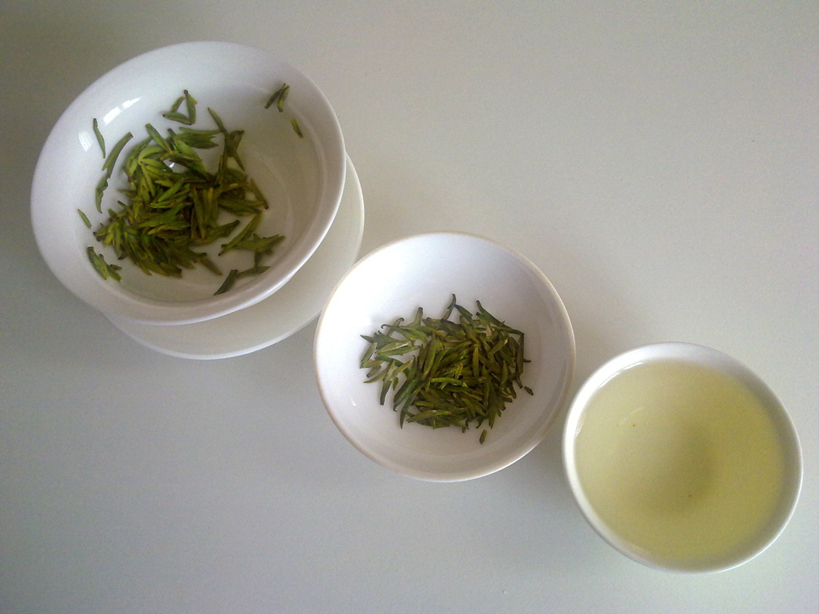
 683 views
683 viewsGreen tea - Wikipedia
en.wikipedia.org
Your folders

 397 views
397 viewsBubble tea - Wikipedia
en.m.wikipedia.org
Your folders

 149 views
149 viewsCream tea - Wikipedia
en.wikipedia.org
Your folders

 401 views
401 viewsGreen tea - Wikipedia
en.wikipedia.org
Your folders

 270 views
270 viewsBlack tea - Wikipedia
en.wikipedia.org
Your folders
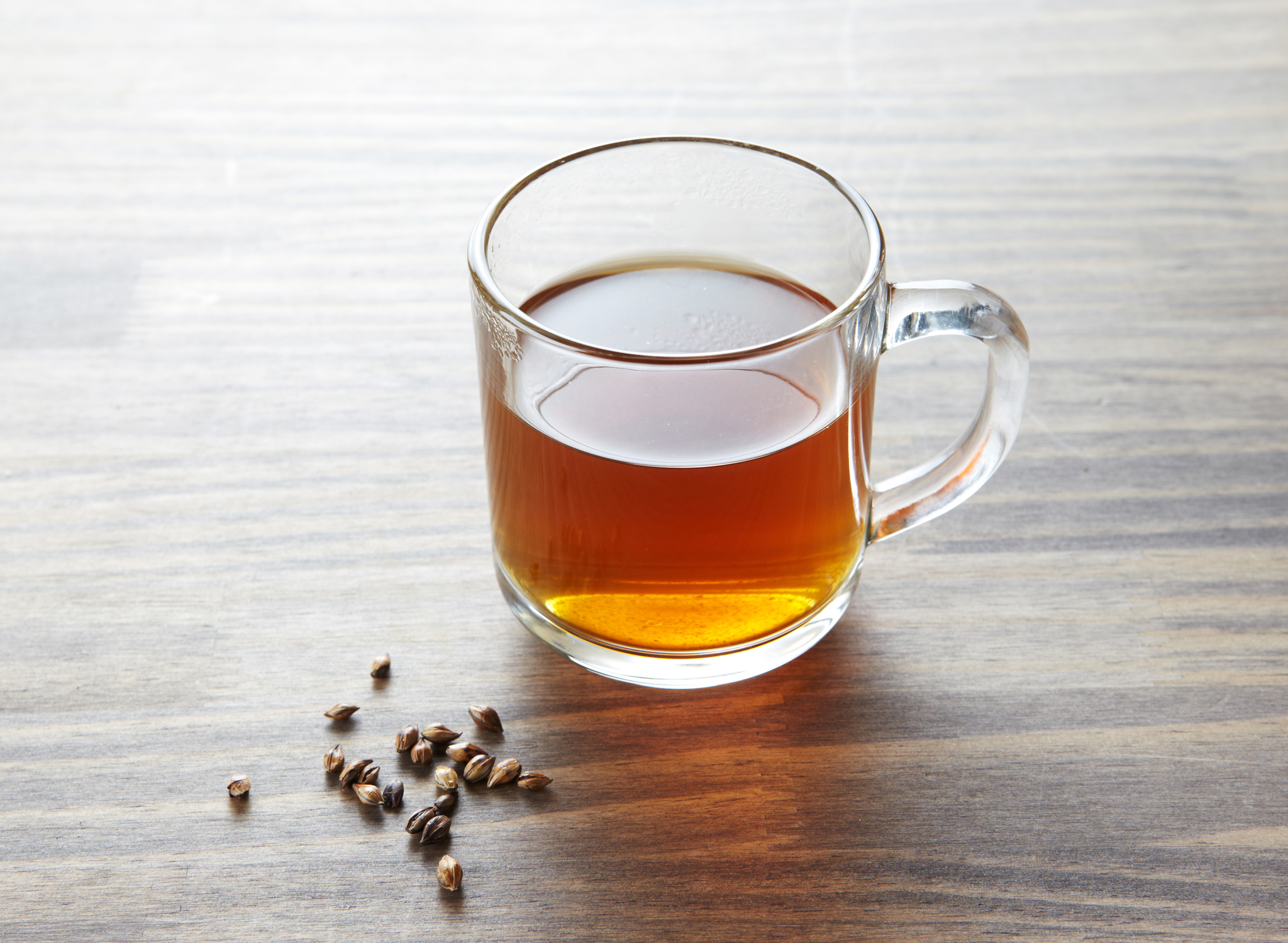
 173 views
173 viewsBarley tea - Wikipedia
en.wikipedia.org
Your folders

 140 views
140 viewsYellow tea - Wikipedia
en.wikipedia.org
Your folders

 225 views
225 viewsTea egg - Wikipedia
en.wikipedia.org
Your folders

 348 views
348 viewsBubble tea - Wikipedia
en.wikipedia.org
Your folders

 489 views
489 viewsBarley tea - Wikipedia
en.wikipedia.org
Your folders

 217 views
217 viewsButter tea - Wikipedia
en.wikipedia.org
Your folders

 261 views
261 viewsTea egg - Wikipedia
en.wikipedia.org
Your folders

 386 views
386 viewsGreen tea - Wikipedia
en.wikipedia.org
Your folders
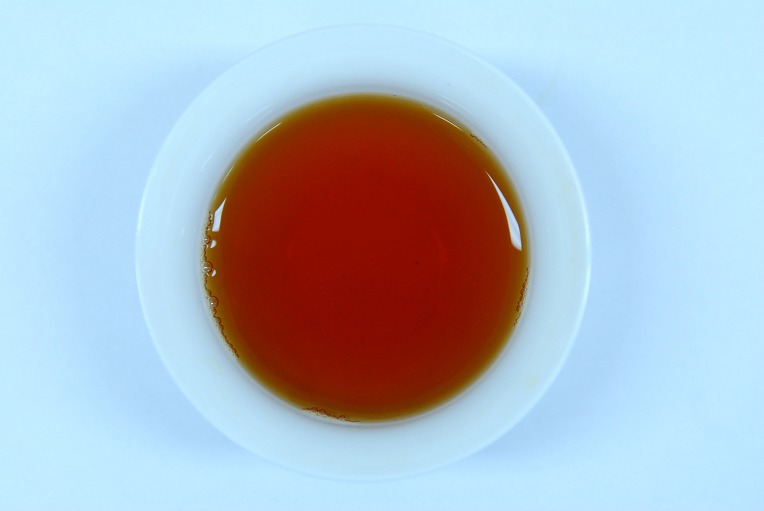
 58 views
58 viewsJaekseol tea - Wikipedia
en.wikipedia.org
Your folders
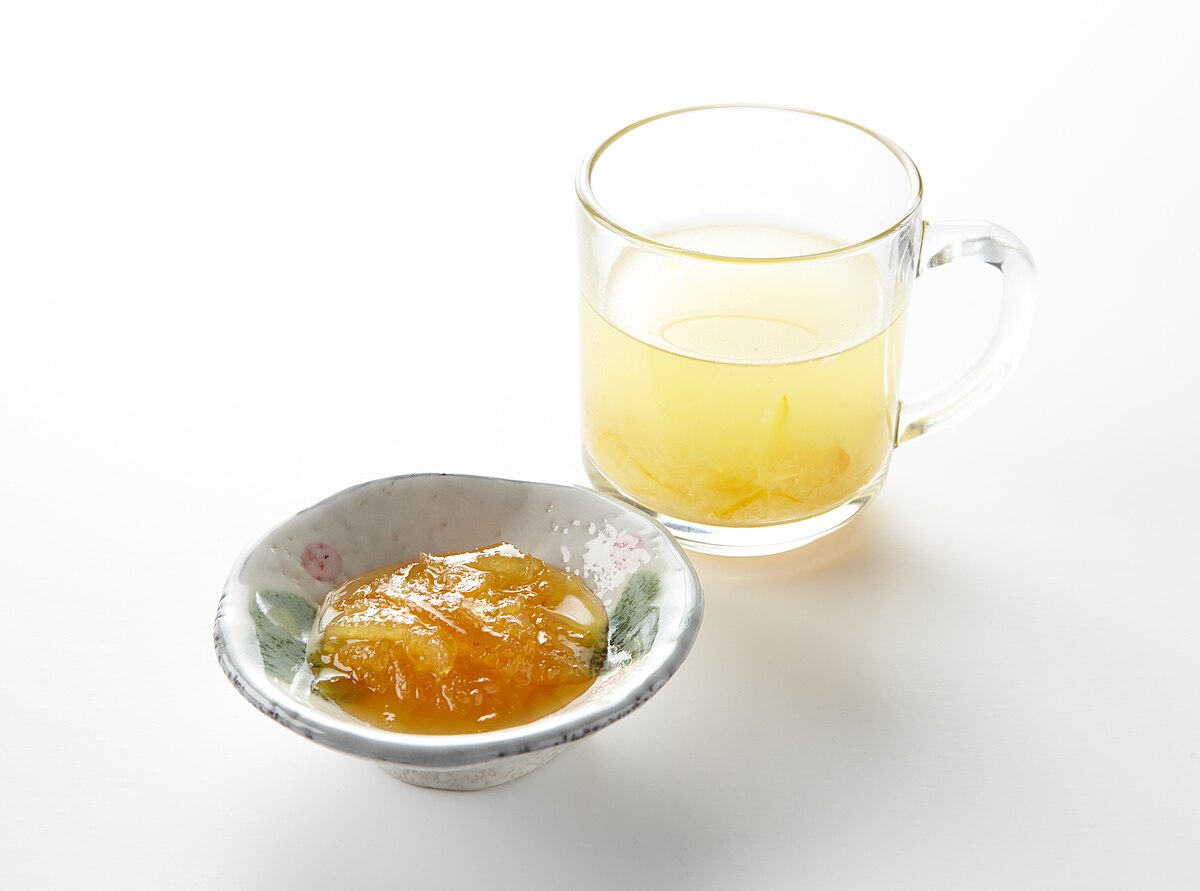
 58 views
58 viewsYuja tea - Wikipedia
en.wikipedia.org
Your folders

 55 views
55 viewsHonest Tea - Wikipedia
en.wikipedia.org
Your folders
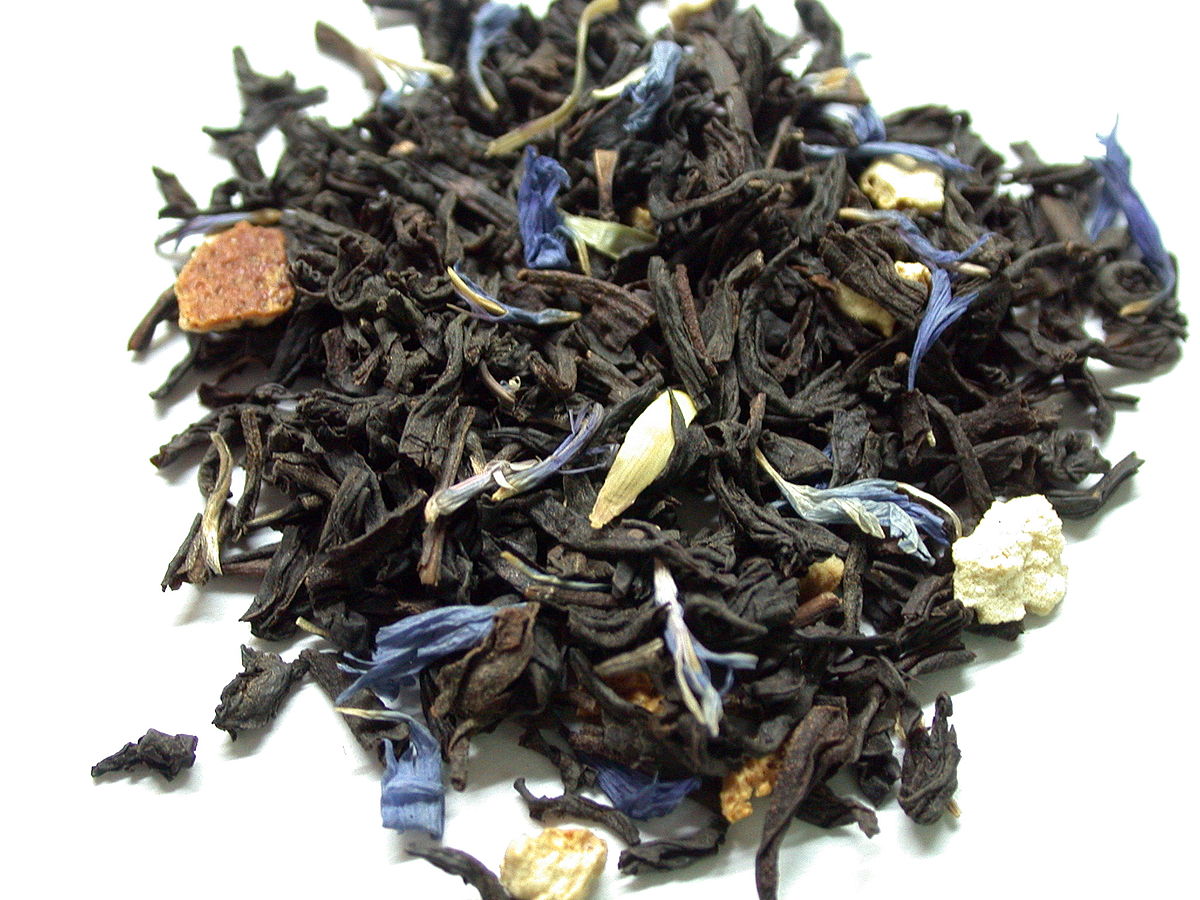
 69 views
69 viewsLady Grey (tea) - Wikipedia
en.wikipedia.org
Your folders

 500 views
500 viewsButterfly pea flower tea - Wikipedi...
en.wikipedia.org
Your folders

 325 views
325 viewsButterfly pea flower tea - Wikipedi...
en.m.wikipedia.org